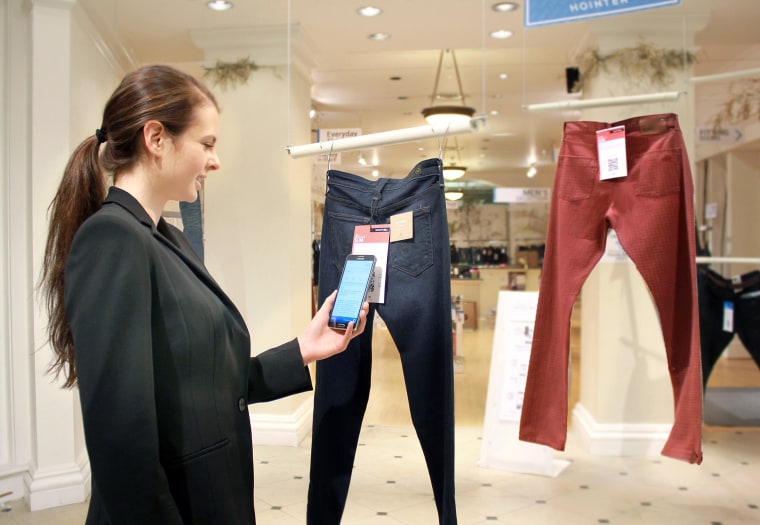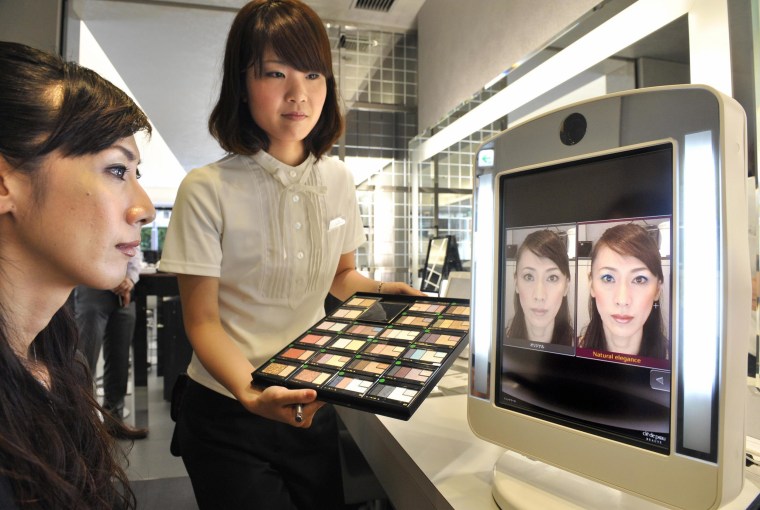Full-body scanners that take your measurements and recommend the clothes that best fit your body. Seamless checkouts that can be done from inside the dressing room or on your mobile phone, eliminating the need to wait in line.
Welcome to the mall of the future.
Innovations like these are already threatening to become mainstream. And, as consumers shift a larger chunk of their spending toward the Web — where they're offered a seemingly endless pipeline of products — experts say bricks-and-mortar locations need a complete makeover to stay relevant.
That means a different tenant mix at malls, smaller selling floors, and technologies and experiences that give shoppers a reason to leave their couches and hit the aisles.
"Retail has to evolve on a regular basis or it faces extinction," said Dan Hurwitz, CEO of open-air shopping center owner DDR. "While the challenges may be different, the need to evolve … is just as important today as it's ever been, if not more so."
The significant shift that lies ahead for the industry is already under way. As ubiquitous mall tenants from Sears to RadioShack shutter stores and consumers shop more online, experts agree there will likely be fewer malls 25 years from now.
The size of individual stores is also a question mark, though experts say selling space will mostly shrink. That's because improved shipping capabilities will lessen the need to keep multiple versions of the same item stocked on the floor.

One company at the forefront of this thinking is Seattle-based Hointer, which licenses its technology to retailers and operates its own apparel store. Its eponymous store keeps only one version of each item on the selling floor, and shoppers use a smartphone app to scan the tags attached to the pieces they want to try on. The items are then dispensed into a dressing room.
If shoppers want to buy something, they can scan their digital shopping cart, stored on the app, at a kiosk to check out; if not, they can send the products back to the stockroom by placing them in a chute.
"The belief that every size, style and color should be cash and carry seems to be changing, and also allowing retailers to trim their store layouts and their inventories," said Byron Carlock, PwC's U.S. real estate practice leader.
Hointer's innovation also highlights another shift within stores — the decreasing need to take up space with cash registers. Giovanni DeMeo, vice president of global marketing and analytics at Interactions Marketing, said evidence of this transition is already present at stores such as Apple, where associates carry around a tablet and check out customers from within the store.
The future of shopping will hinge on time rather than space, said Mike Moriarty, a partner in the retail practice of A.T. Kearney. He envisions a shopping center where 20 percent of the tenants will constantly be changing, giving consumers a sense of urgency to head to the mall.
Companies that cater to this idea are already starting to sprout. Story, a Manhattan retail location, changes its store design and product mix every four to eight weeks, allowing small brands to experiment with brick and mortar. Taking a different spin on the same concept is Storefront, a website that connects retailers with space to rent.
Bryan Gildenberg, chief knowledge officer at Kantar Retail, said there also will be a fusing of residential, commercial, retail and entertainment space 25 years down the road — a trend that is slowly emerging. He predicts that as Americans live longer, small co-operative food stores will open in retirement communities, and will be staffed by the people who live there.
"As the nature of malls becomes less retail and more multipurpose, I think all of this stuff is going to end up [coming] together," he said.
'The new window shopping'
To make bricks-and-mortar shops more interesting, experts envision a high-tech future that wows shoppers with fun technologies they want to play with and makes shopping easier.
One concept is the endless aisle, where customers shop at a kiosk and can purchase items that are no longer in-stock or aren't sold in stores. Bruce Molloy, vice president of global business development at Customer Mobile, predicted this technology will go one step further in 25 years, becoming what he's dubbed the "wall mall."
Through this technology, Molloy said, retailers could use a single wall to showcase all of their inventory inside stores, to target customers looking for a particular item in a different color, or outside their doors, to draw shoppers in. They could even set up an entire storefront with just one wall.
"This is the new window shopping," he said.
Retailers are also experimenting with the idea of virtual stores, where by walking and moving their smartphones, shoppers can browse virtual aisles and add items to their cart by touching the screen.
Through this technology, Chinese online grocery store Yihaodian in 2012 opened 1,000 virtual stores in one day, which consumers could "enter" via the store's app when they stood in a tagged area. Yihaodian saw its revenue increase 17 percent over a three-month period after the campaign was launched, a spokeswoman said.
"Retail has to evolve on a regular basis or it faces extinction."
Tesco, which is experimenting with ways for consumers to use Google Glass to scan barcodes on in-home grocery products and add them to their virtual shopping carts, is also looking at ways to innovate the in-store experience. The grocer has tested virtual supermarkets where, by using their smartphones to scan QR codes on picture displays, shoppers instantly add the items to their online carts.
Motorola has created a personal shopping device that lets shoppers scan items as they pick them up off the shelves, significantly reducing checkout time. "You bypass the entire point-of-sale system," said Tom Bianculli, Motorola Solutions' senior director of emerging business.
Meanwhile, new technologies at apparel, beauty and home improvement stores are fusing augmented reality with the physical world. Retailers from Macy's to Uniqlo have experimented with "magic mirror" technologies, which allow shoppers to select items on a tablet and try them on virtually.
Lowe's is testing augmented reality via a virtual reality room that lets shoppers view a 3-D representation of their renovations before they start on the projects.

And Bloomingdale's has incorporated Me-ality body scanners into some of its stores, which Virginia Morris, vice president of consumer insights and strategy at Daymon Worldwide, equated to "the TSA repurposed for the ultimate shopping experience." Through this technology, shoppers enter a round chamber, known as the Size-Matching Station, where a circling wand collects more than 200,000 reference points from their bodies. They are then given a personalized list of recommended apparel brands and sizes.
Creeping out consumers
Not all future technologies will be all about the "wow" factor. Retailers are also researching ways to make shopping more seamless, including the use of beacon technology. Shoppers who opt in will be able to receive additional information about items that they walk past or pick up items, as well as targeted promotions based on where they are in the store.
Retailers will even be able to track the movement of a phone to determine what type of shopper it belongs to and deliver better offers for them, said Joe Jensen, general manager of Intel Retail Solutions. Someone who spends hours browsing at the mall would be targeted differently than someone who enters knowing exactly what he or she wants.
Intel's Jensen said the key to these offerings is making them transparent to shoppers, and giving them a way to opt out. Otherwise retailers risk creeping out consumers and losing their trust.
"[I have a] strong view about personal privacy but also, selfishly, I don't want to invest in a technology that consumers think is creepy because in the end it won't succeed," he said.